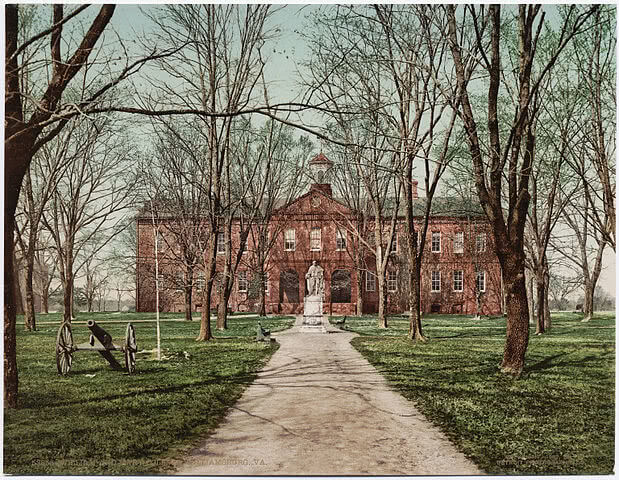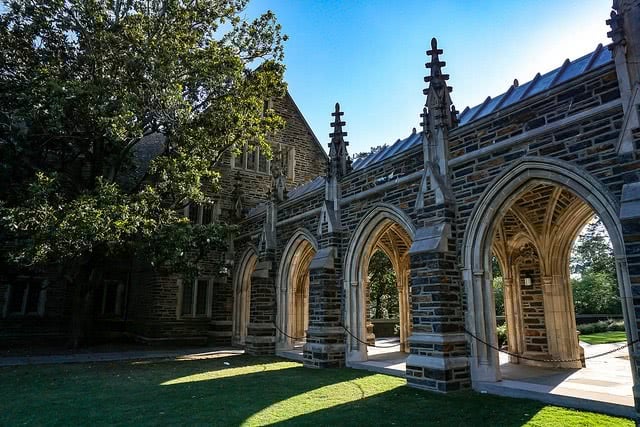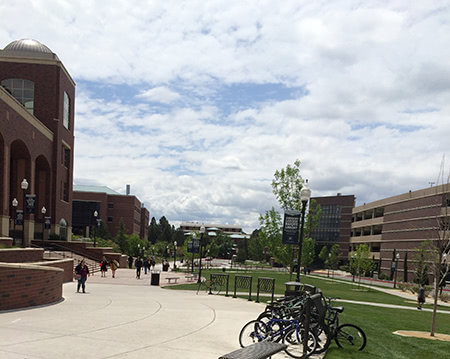The Ivy League schools, Harvard, Yale, etc., are household names. These private colleges and universities are often considered the best of the best. And for good reason! But did you know that there are “Public Ivies” that can be just as prestigious as ones in the Ivy League?
These highly selective schools are academic powerhouses in their own right. Continue reading to learn more about them, why they stand out against other colleges and universities, and which schools currently tout the Public Ivy label.

“William and Mary College, Williamsburg, Virginia, circa 1902” by Unknown – Beinecke Rare Book & Manuscript Library, Yale University ([1]).. Licensed under Public Domain via Commons.
What Are “Public Ivies?”
The name “Public Ivies” refers to colleges and universities that, although they aren’t in the Ivy League, are considered to be on the same level as them. The term was originally coined in Public Ivies: A Guide to America’s Best Public Undergraduate Colleges and Universities by Robert Moll in 1985. An admissions officer for a number of schools across the United States, he initially found 8 schools that could be comparable to the Ivy League schools along with 9 runners-up.
Moll’s original ranking system took several different factors into account such as cost of tuition, quality of the faculty, available resources, cultural traditions, academic rigor, and more.
How Do Public Ivies Compare to Ivy League Schools?
Public Ivies have the name because they are academically comparable to Ivy League schools. And like the elite private colleges and universities, the Public Ivies tend to be difficult to get into. Several currently have acceptance rates of below 20% at the moment, especially since more students are applying to these big-name schools outside of their home state.
However, they do have differences as well. In comparison, Public Ivies tend to have:
- Lower costs of tuition
- Larger undergraduate class sizes
- Smaller endowments
These aren’t hard and fast differences, though. They’re simply trends. For example, The University of Michigan, a Public Ivy, has a larger endowment than Columbia University, an Ivy League school.
Which Schools are Currently Considered Public Ivies?
The Original Public Ivies
In Moll’s original writings about the Public Ivies, he named 8 schools in 1985 that met his criteria:
- College of William and Mary
- Miami University
- University of California (campuses as of 1985)
- University of Michigan
- University of North Carolina at Chapel Hill
- University of Texas at Austin
- University of Vermont
- University of Virginia
The 9 runners-up were:
- University of Colorado Boulder
- Georgia Institute of Technology
- University of Illinois Urbana – Champaign
- New College of Florida (formerly New College of the University of South Florida)
- Pennsylvania State University
- University of Pittsburgh
- State University of New York at Binghamton
- University of Washington
- University of Wisconsin – Madison
Today’s Public Ivies
The list of Public Ivies has undergone a number of changes in the past 40 years. The most commonly used guide today was published in 2001 by the Greenes’ Guides titled The Public Ivies: America’s Flagship Public Universities.
The full list contains the following 30 schools:
- Pennsylvania State University
- Rutgers University
- State University of New York at Binghamton
- University of Connecticut
- College of William and Mary
- University of Delaware
- University of Virginia
- University of Arizona
- University of California – Berkeley
- University of California – Davis
- University of California – Irvine
- University of California – Los Angeles
- University of California – San Diego
- University of California – Santa Barbara
- University of Colorado Boulder
- University of Washington
- Indiana University Bloomington
- Miami University
- Michigan State University
- Ohio State University
- University of Illinois Urbana – Champaign
- University of Iowa
- University of Michigan
- University of Minnesota Twin Cities
- University of Wisconsin – Madison
- University of Florida
- University of Georgia
- University of North Carolina at Chapel Hill
- University of Texas at Austin
How Can Students Increase Their Acceptance Odds?
Students applying to Public Ivies face stiff competition for a coveted acceptance letter, and acceptance rates continue to drop among both these public schools and the Ivy League universities. Those interested in applying need to have excellent grades, show academic rigor, get involved in their community, participate in extracurricular activities, and have a well-rounded application in order to improve their chances of admission.
“Public Ivies” is an informal term for these universities, but they can offer much of the same experiences as the Ivy League schools. They’re known for their outstanding academic programs, long-standing traditions, educated faculty, and more. Attending one of these schools comes with a number of benefits that come with attending an Ivy League sometimes at a fraction of the cost.
Will your application be enough to be accepted to one of these Public Ivy schools? We can help you uncover your chances! Use our free College Match tool to see how you stack up against recently accepted students and how you can increase your chances of receiving an acceptance letter.






